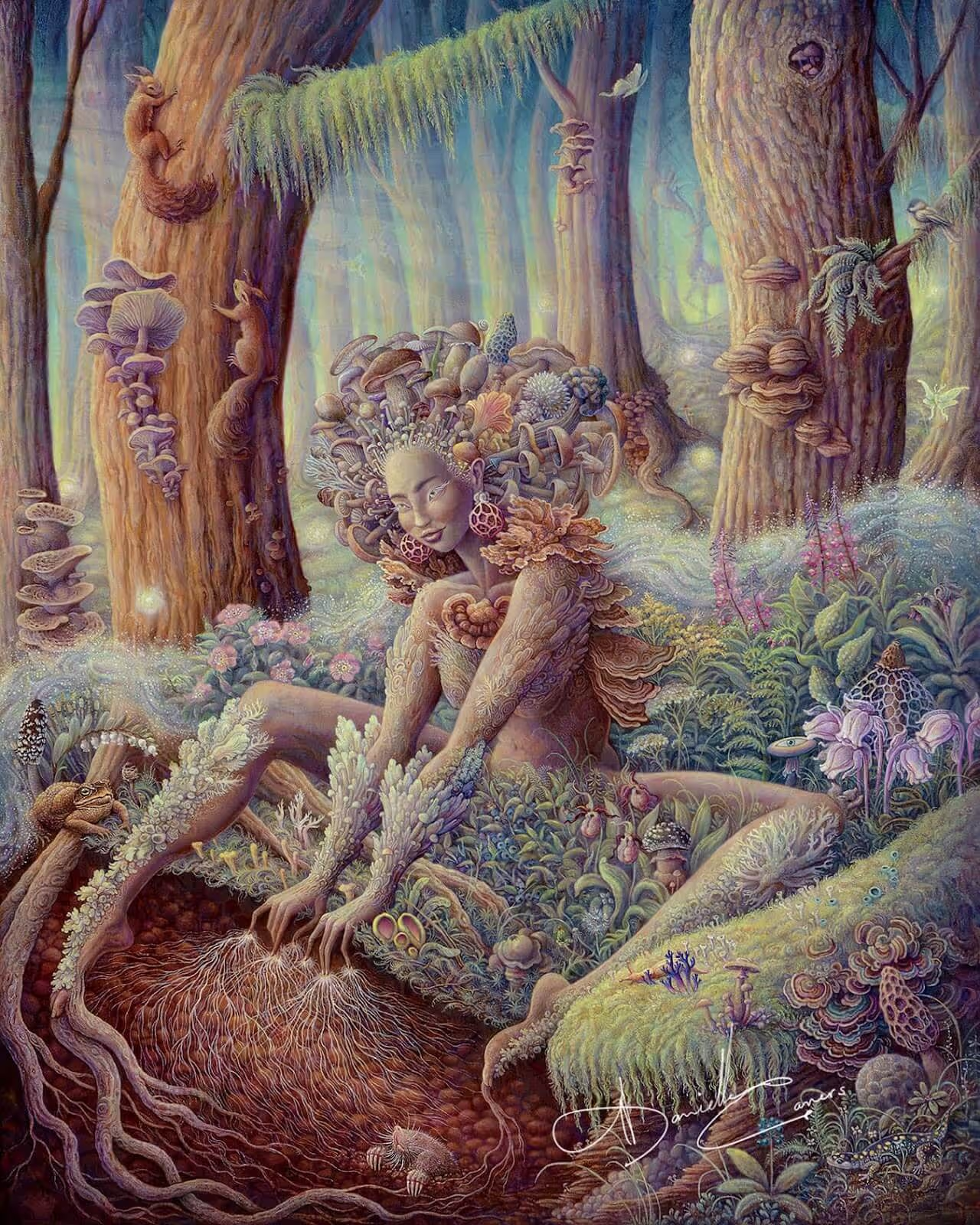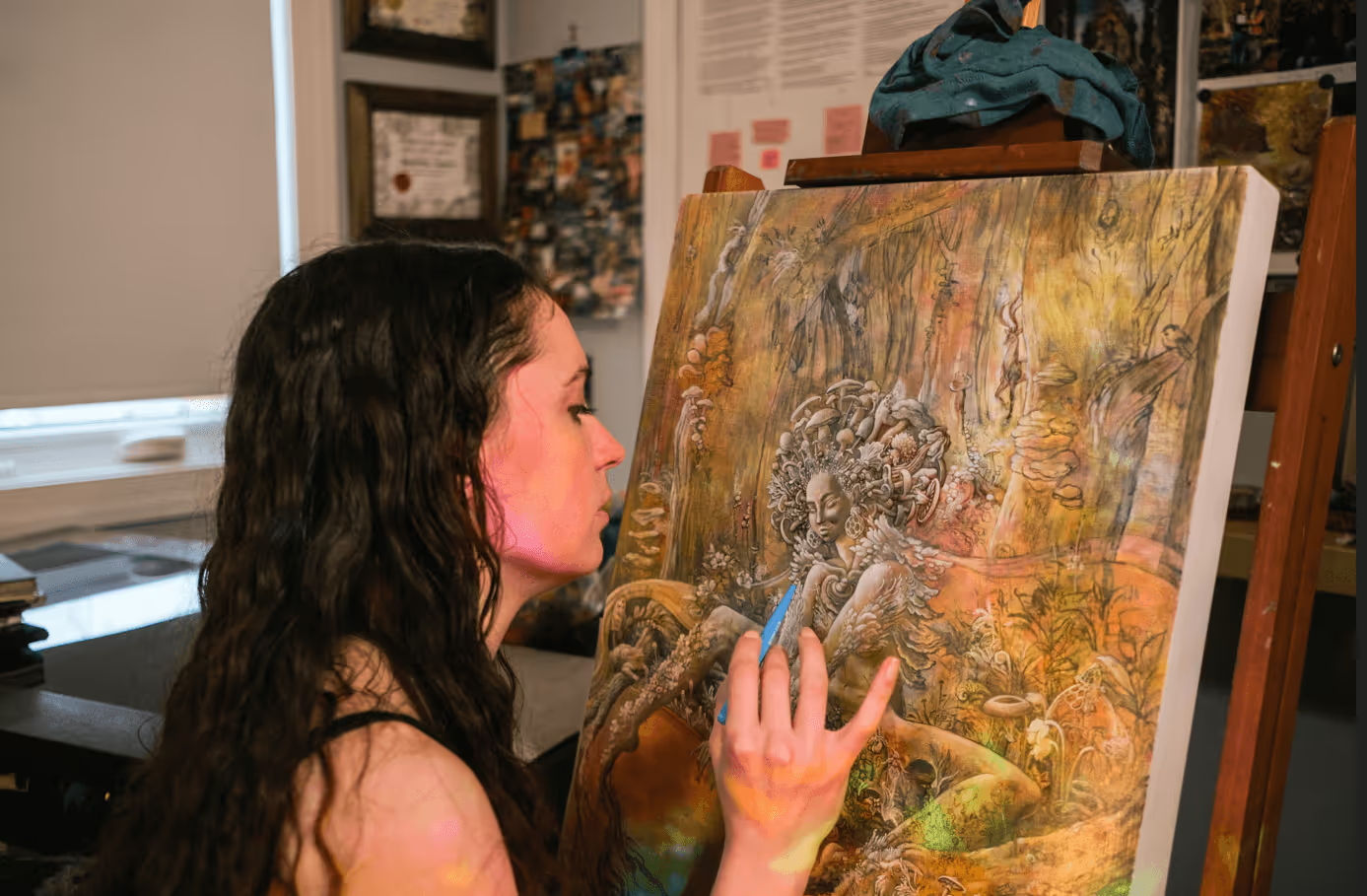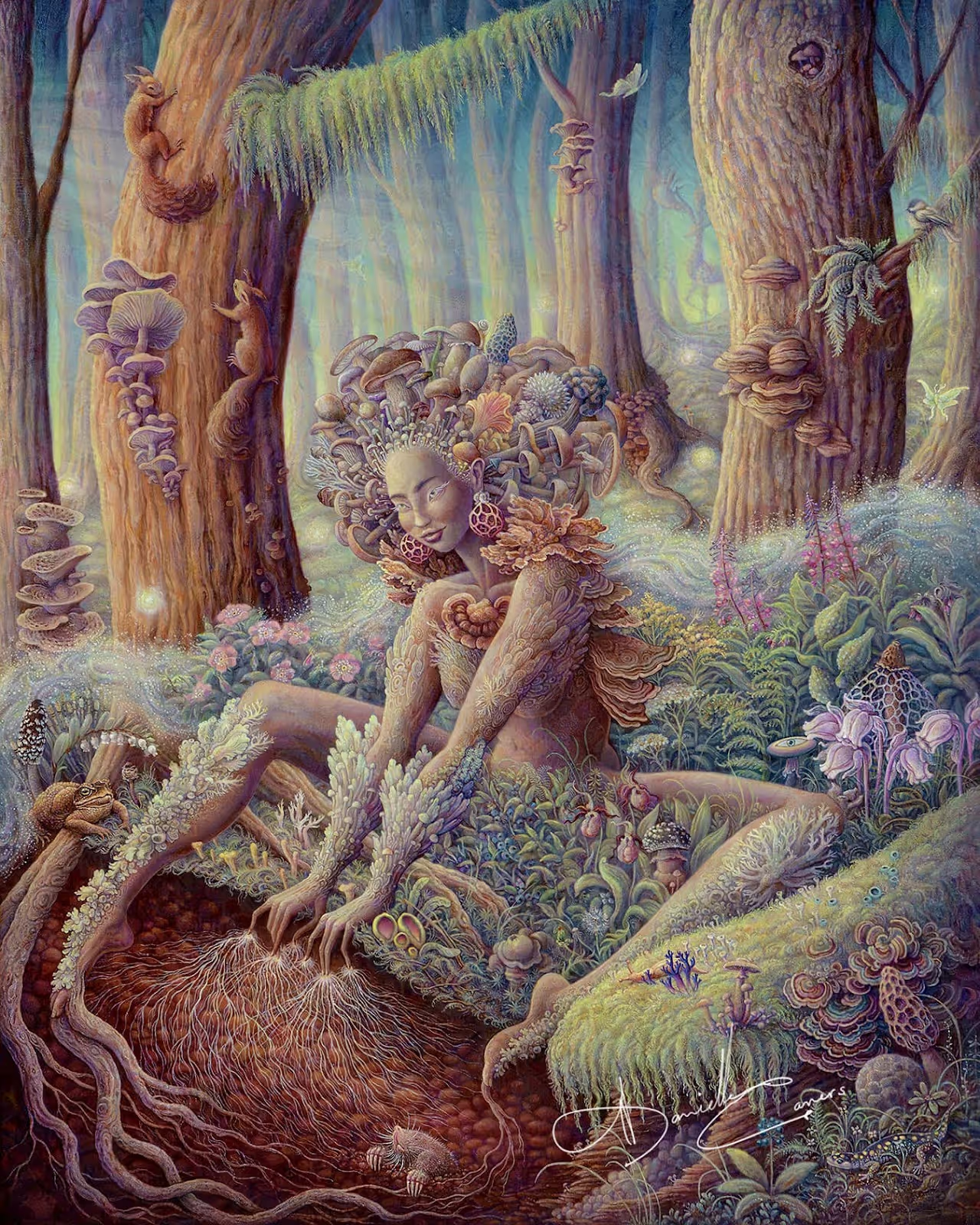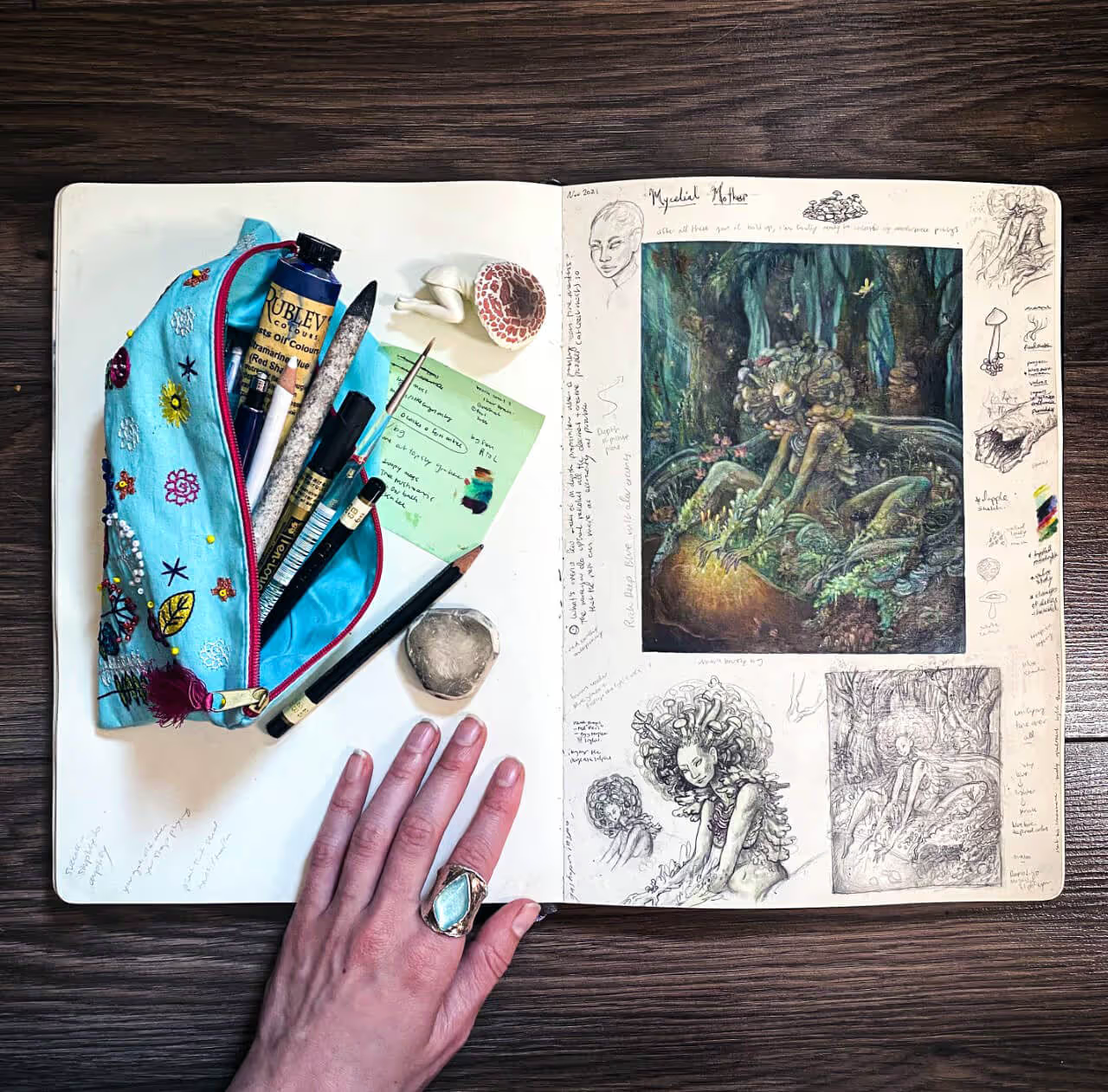We spoke with Danielle Caners, the visual artist behind the breathtaking ‘Mycelia,’ about her creative process, inspirations, and her work in general.
April 22, 2024


FFungi Staff
Communications Lead
FFungi Volunteer
After over a year of devoted work poured into this painting, Danielle Caners delighted us with the unveiling of the goddess of fungi: Mycelia.
Crafted with egg tempera and oil paint, 'she embodies the life-giving spirit of the Queendom of fungi,' as Danielle says. She was deeply inspired by the Fungi Foundation's efforts in conserving the world’s funga, and dedicated this painting in the spirit of advancing education and conservation efforts for fungi.
How did the inspiration for Mycelia first strike you?
The inspiration for Mycelia is in some ways a culmination of my years of fascination for fungi, paired with my appreciation for the Fungi Foundation and Giuliana’s work in the field. I wanted to encapsulate the feminine nurturing quality of fungi and explore what the essence of fungi would look like embodied as a life-giving goddess. Nature never ceases to awe and inspire me, so Mycelia became the next expression of this love.


Did the initial image you had match the final result? If not, how did it evolve?
The final painting actually came out remarkably close to the initial design! Sometimes the image imprints really strongly and then it’s just about all the work that goes in to making it real. I had a few composition sketches exploring different positions for the goddess, and once decided, started a small practice painting. Once I sat down the small painting became a fervor and I found myself up late, energized with inspiration to complete it! From there the only major changes have been the depth and nuances of colour and realism in the final piece.
.avif)
Could you walk us through the process of creating a painting like this? (From the first thought about it, to drafts, painting to the final print with holographic elements)
As I was just sharing, the small practice painting became an important part of the process for me to map out and puzzle together all the elements to be included. For a piece like mycelia, I also collected a digital album of hundreds of reference photos of forests and specific species of funga, flora and fauna and well as taking my own reference photos to get the anatomy right. These images are used all through the process though I also don’t want to be overly attached to any specific photo; otherwise the painting can come out rigid. It’s more so just to understand the basic construction.
This painting is my first in depth practice of mishe technique, a historical form of “indirect painting” which means rather than painting exactly what you see, the image is built in layers. For Mycelia, this meant a Sepia toned base in oil and egg tempera paint capturing all the elements and the general lighting. From there, countless layers of translucent and opaque layers of oil paints were built up to create the final result. This process took over a year from start to completion.
Given the length of the project, she traveled around with me on occasion. I believe I worked on her in four different spaces including cabin trips in nature. Once while painting alone at the cabin one night, I saw something out of the corner of my eye and turned to find a tiny tree frog stuck to the window. They’re very rare in Manitoba and I have no idea how it climbed so high, a little nature blessing.
Once the painting was completed, it was taken in for professional documentation. From the start, I’d envisioned creating a very special print edition given the imagery and special fundraising collaboration. After many months of searching during the painting process, I finally discovered a printer that could do it justice. Once they had the final file, their team spent a few weeks creating a file on top of the image to block out opaque vs holographic areas of the image and then hand design the raised elements to best accentuate the scene. After a couple tests, we perfected the print result and were off to the press. Each individual print takes about an hour for the printer, due to the process of building up the inks! I couldn’t be happier with the outcome, and seeing it in person for the first time was a surreal experience!

What is your personal connection or relationship with fungi that led to dedicating this artwork to the cause?
My love of nature and particularly fungi goes beyond words; this is why I love painting them so much as a way to express it. From the moment my eyes began to open to their incredible world, my life and lens on the world has truly never been the same.
When I see these beautiful manifestations of life, I see magic occurring before our very eyes. They are nutrient and soil alchemists, turning over life in truly magnificent ways. The way they proliferate and survive extreme conditions and their sheer variety of expression is just incredible.
As a trained clinical herbalist, I also have a deep appreciation for the healing qualities they can bring to various ailments. As a naturalist crafter, the natural dyes they can yield is a complete rainbow to behold! And of course, in the shamanic realm they offer so many gifts both through deep journeys and microdosing. This much our ancestors have known through the ages, and is now being validated in scientific studies.
In the greatest sense, fungi hold many keys to supporting balance in an ecologically struggling world and society. The only way forward is in partnership and respect of nature. A sentiment I felt called to portray as Mycelia.
It’s the deepest joy and honor to be able to give back to the cause with this partnership with Fungi Foundation! I have so much respect for every bit of effort they are contributing to the care, preservation and education of this incredible kingdom and am thrilled to be supporting the mission in this way.
5% of print sales will be donated to the Fungi Foundation. Get yours!